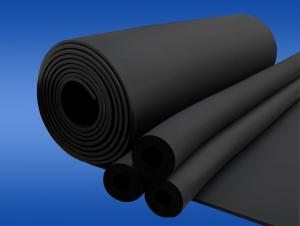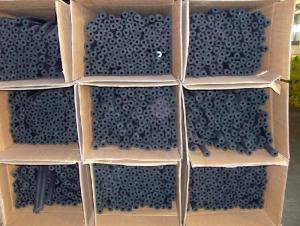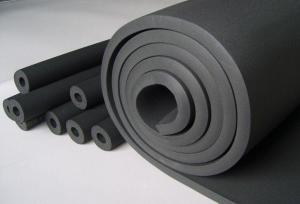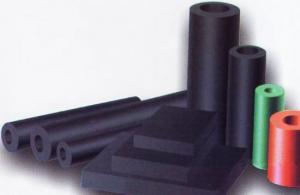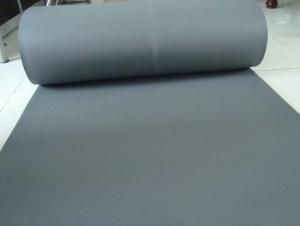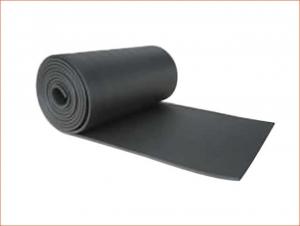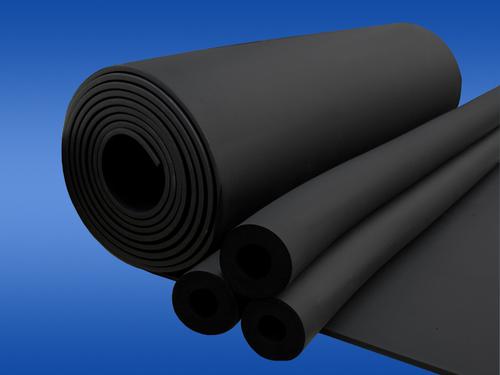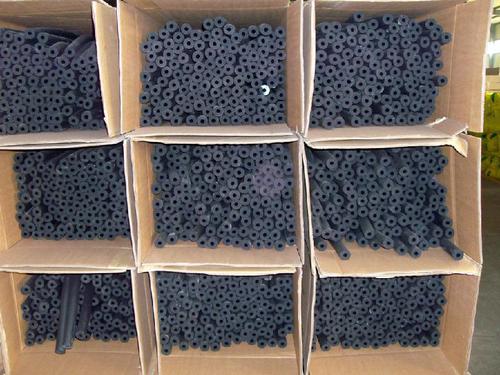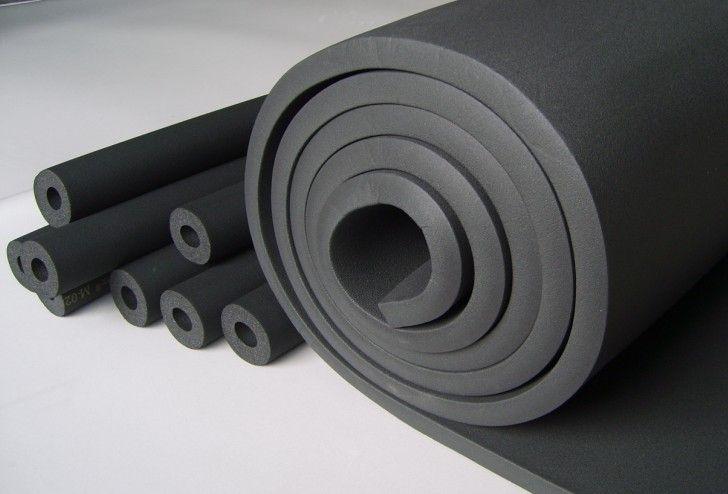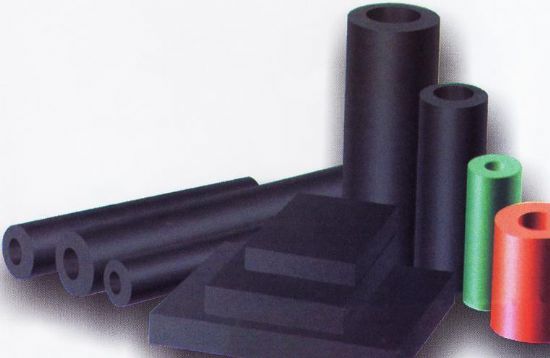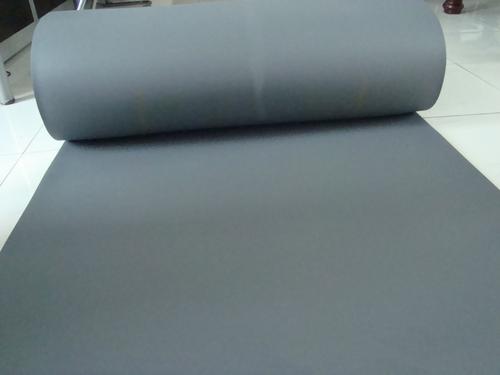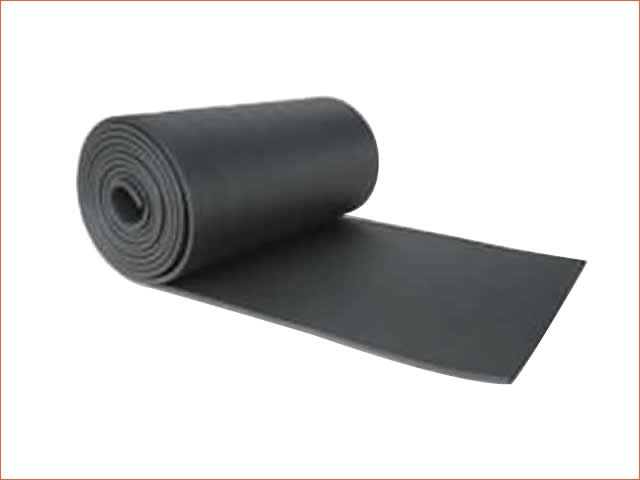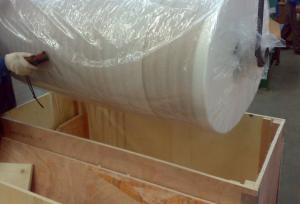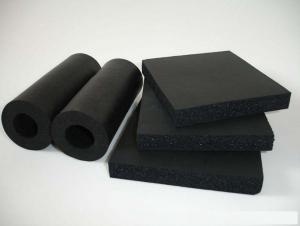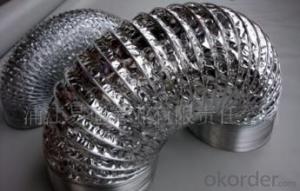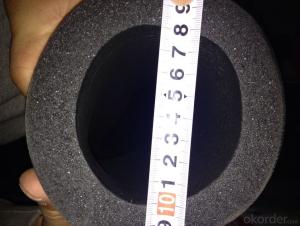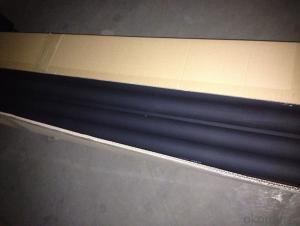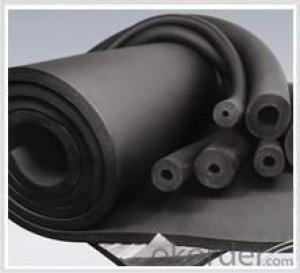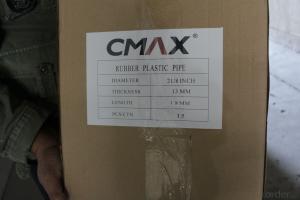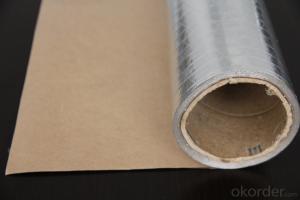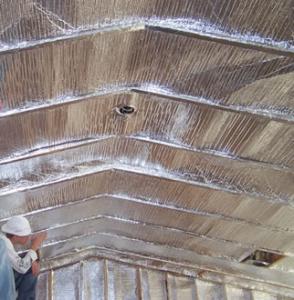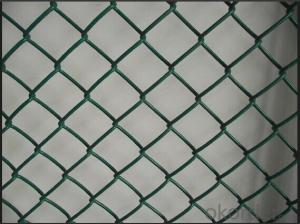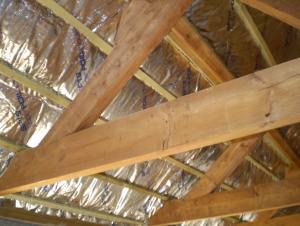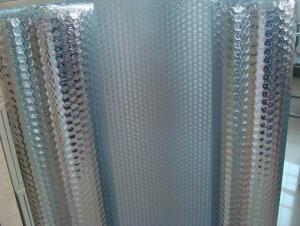High Quality Rubber Plastic with Aluminum Foil Facing
- Loading Port:
- China Main Port
- Payment Terms:
- TT OR LC
- Min Order Qty:
- -
- Supply Capability:
- -
OKorder Service Pledge
OKorder Financial Service
You Might Also Like
Flexible Rubber Plastic Insulation Material
High Quality Rubber Plastic
rubber plastic is a high quality heat-insulating and heat-preservation material which use butyronitrile rubber and polyvinychloride(NBR,PVC) as main raw materials.
The productionprocess includes mixing, tensing and continuous extruding , heating andfoaming, cooling and cutting.
FEATURES
Lower heat-conductivity
Higher fire-blockingperformance
Damp-proof andWater-proof
Softness
Neat and
Easy to installeasy handing and storage
Good flexibilityand tenacity
RUBBER PLASTIC SHEET
Standard Size
Density(kg/m3) | 40-90 | ||||
Thickness(mm) | 10 mm | 15 mm | 20 mm | 25 mm | 30 mm |
Length (m) | 20 | 20 | 10 | 10 | 10 |
Width (m) | 1.5 | 1.5 | 1.5 | 1.5 | 1.5 |
Remark: Othersized are available upon request. Other colors are available at customers request.
Application
rubber plastic arewidely used in sound isolation of wall planking, sound absorption in air ducts,and sound absorbing decorations in entertainment spaces. It can also be usedfor shock resistance and pressure relief in instruments and equipment.
TechnicalParameters
Item | Specification | Standard |
Density(kg/m3) | 40-90 | GB/T 6343 |
Temperature(℃) | -40~110 | GB/T 17794 |
Flammability | Class B | GB/T 8624-2006 |
Class 0 | BS 476Part7∝Part6 | |
Oxygen index (%) | ≥40 | GB/T 2406 |
SDR | ≤65 | GB/T8627-1999 |
Conductivity factor Average temperature | ≤0.031 | GB/T 10294 |
Water vapor permeability (%) | ≥1.0x104 | GB/T 17146-1997 |
≤1.96x 10-11 | ||
Water absorption ratio in vacuum (%) | ≤10 | GB/T 17794-2008 |
Dimension stability(N/cm) | ≤10 | GB/T 8811 |
Crack resistance | ≥2.5 | GB/T 10808 |
Compression resilience ratio (%) | ≥70 | GB/T 6669 |
Anti-ozone | No cracking | GB/T 7762 |
Ageing-resistance | Slightly crumpling, no cracks no pin holes, not deforming | GB/T 16259 |
Packaging,
Product is packedin cartoon.
RUBBER PLASTIC PIPE
Productintroduction
rubber plastic ismainly applicable to heat insulation of central air-conditioner system,refrigerator room and pipes of all kinds of refrigeration equipment and heatingequipment.
Standard Size
Copper tube OD inch | Seamless tube OD mm | Galvanized tube DN | ID mm | 9mm Nominal thickness | 15mm Nominal thickness | 20mm Nominal thickness | 25mm Nominal thickness | 30mm Nominal thickness | |||||
mm×mm | piece | mm×mm | piece | mm×mm | piece | mm×mm | piece | mm×mm | piece | ||||
1/4 |
|
| 6 | 6×9 | 180 |
|
|
|
|
|
|
|
|
3/8 |
| 6 | 10 | 10×9 | 140 | 10×15 | 80 | 10×20 | 70 |
|
|
|
|
1/2 |
|
| 13 | 13×9 | 120 | 13×15 | 80 | 13×20 | 50 | <p style="background-color:white;background-position:initial initial;background-repeat:initial initial;text-align:lef | |||
- Q: What distinguishes aluminum foil facing from other types of foils?
- <p>Aluminum foil facing is characterized by its aluminum layer, which provides excellent heat and light reflection, making it ideal for insulation and cooking applications. It's also resistant to corrosion and has a shiny finish. In contrast, other types of foils like Mylar (polyester) are more flexible and tear-resistant, used in various industrial applications. Copper foil is used for electronics due to its high conductivity, while gold foil is valued for its decorative properties. Each type of foil has unique properties that make it suitable for specific uses, with aluminum foil facing being particularly known for its thermal and reflective qualities.</p>
- Q: What are the safe and effective alternatives to aluminum foil for food packaging?
- <p>Yes, there are several substitutes for aluminum foil facing that are safe and effective for food packaging. One such alternative is parchment paper, which is non-toxic and can withstand high temperatures without releasing harmful chemicals. Silicone baking mats are also a good option, as they are reusable, non-stick, and can be used in both the oven and freezer. Additionally, beeswax wraps can be used as a natural, eco-friendly alternative for wrapping food, although they may not be suitable for high-temperature cooking. It's important to ensure that any substitute used is food-safe and can handle the intended cooking temperature to maintain food safety and quality.</p>
- Q: Is it safe to use aluminum foil with a reflective side for storing food?
- <p>Yes, aluminum foil facing can be used for food storage. It is commonly used to wrap, cover, or store food in the refrigerator or freezer. The reflective side of aluminum foil is safe for food contact as it is made of a food-grade material. However, it's important to ensure the foil is clean and free from any damage or sharp edges that could puncture other food packaging. It's also advisable to avoid using it in direct contact with acidic or alkaline foods, as this can cause the foil to corrode and potentially release aluminum into the food.</p>
- Q: What are the eco-friendly options available to replace plastic containers?
- <p>Yes, there are several alternatives to plastic containers that are more environmentally friendly. Glass containers are a popular choice due to their durability and ability to be reused multiple times. Stainless steel containers are also a great option as they are long-lasting and do not leach chemicals. Biodegradable materials like bamboo, silicone, and certain types of plant-based plastics are other alternatives. Additionally, using cloth bags or reusable food wraps can help reduce the need for single-use plastic containers.</p>
- Q: What are some lesser-known applications of aluminum foil in the kitchen?
- <p>Aluminum foil facing has several creative uses in the kitchen beyond just wrapping food. It can be used to cover baking dishes to prevent spills and messes in the oven, line baking sheets for easy cleanup, or create a makeshift roasting bag for cooking meats. It can also be used to sharpen knives by folding it into a book shape and running the blade through the sharp edges, or to create a non-stick surface for cooking by lining molds or baking pans. Additionally, it can be used to scrub pots and pans, removing stuck-on food, or to create a barrier between food and direct heat to prevent burning. These uses showcase the versatility of aluminum foil in the kitchen.</p>
- Q: Is it possible to use aluminum foil with a facing layer to create a sandwich?
- <p>Using aluminum foil facing to make a sandwich is not recommended. Aluminum foil is not designed for direct food contact, especially when heated, as it can leach aluminum into the food, which is potentially harmful. Instead, use materials specifically designed for food contact, such as wax paper, parchment paper, or plastic wrap, which are safe for contact with food and can withstand the temperatures involved in making a sandwich.</p>
- Q: This question asks for the most effective methods to utilize aluminum foil when preparing food for freezing or frying, specifically focusing on the aluminum foil facing.
- <p>Aluminum foil facing is best used for preparing food for freezing or frying by ensuring even heat distribution and maintaining food's moisture. For freezing, line your baking sheet with aluminum foil facing down to prevent sticking and make removal easier. When freezing individual portions, wrap them tightly in foil to protect their shape. For frying, use foil to create a barrier between the food and direct heat, which can help in even cooking. Always make sure the foil is shiny side out for better heat reflection and椋熷搧瀹夊叏. Remember to avoid overheating as aluminum foil can melt at high temperatures.</p>
- Q: This question asks for instructions on how to store food wrap materials after they have been used.
- <p>After using food wrap materials, it's important to clean them properly before storing. Rinse off any food residue with warm water and mild dish soap. Avoid using abrasive materials that could damage the wrap. Once clean, gently pat dry with a clean towel or let air dry. Store the wraps in a cool, dry place away from direct sunlight to prevent degradation. You can use a clean, airtight container or resealable plastic bag to keep them protected and dust-free. Always check for any signs of wear or damage before reusing to ensure food safety.</p>
- Q: What is the most suitable material for food packaging that ensures safety and is also eco-friendly?
- <p>The best material for food packaging that is both safe and environmentally friendly is biodegradable or compostable material. Materials such as PLA (Polylactic Acid), made from renewable resources like corn starch, and paper-based packaging are preferred. They are non-toxic, compostable, and reduce plastic waste. Additionally, materials like glass and metal can be recycled and are also considered safe for food contact. However, it's crucial to consider the entire lifecycle of the packaging to ensure it's truly sustainable.</p>
- Q: Explain the differences between thin and thick aluminum foil facing in terms of thickness, durability, and usage.
- <p>Thin aluminum foil facing is characterized by its low thickness, which makes it flexible and easy to handle but less durable. It's commonly used for wrapping food, baking, and protecting surfaces. Thick aluminum foil facing, on the other hand, is more robust and tear-resistant, suitable for heavy-duty applications such as construction, insulation, and packaging. The thicker material offers better protection and durability, but it's less pliable and can be more challenging to work with.</p>
Send your message to us
High Quality Rubber Plastic with Aluminum Foil Facing
- Loading Port:
- China Main Port
- Payment Terms:
- TT OR LC
- Min Order Qty:
- -
- Supply Capability:
- -
OKorder Service Pledge
OKorder Financial Service
Similar products
Hot products
Hot Searches
Related keywords
